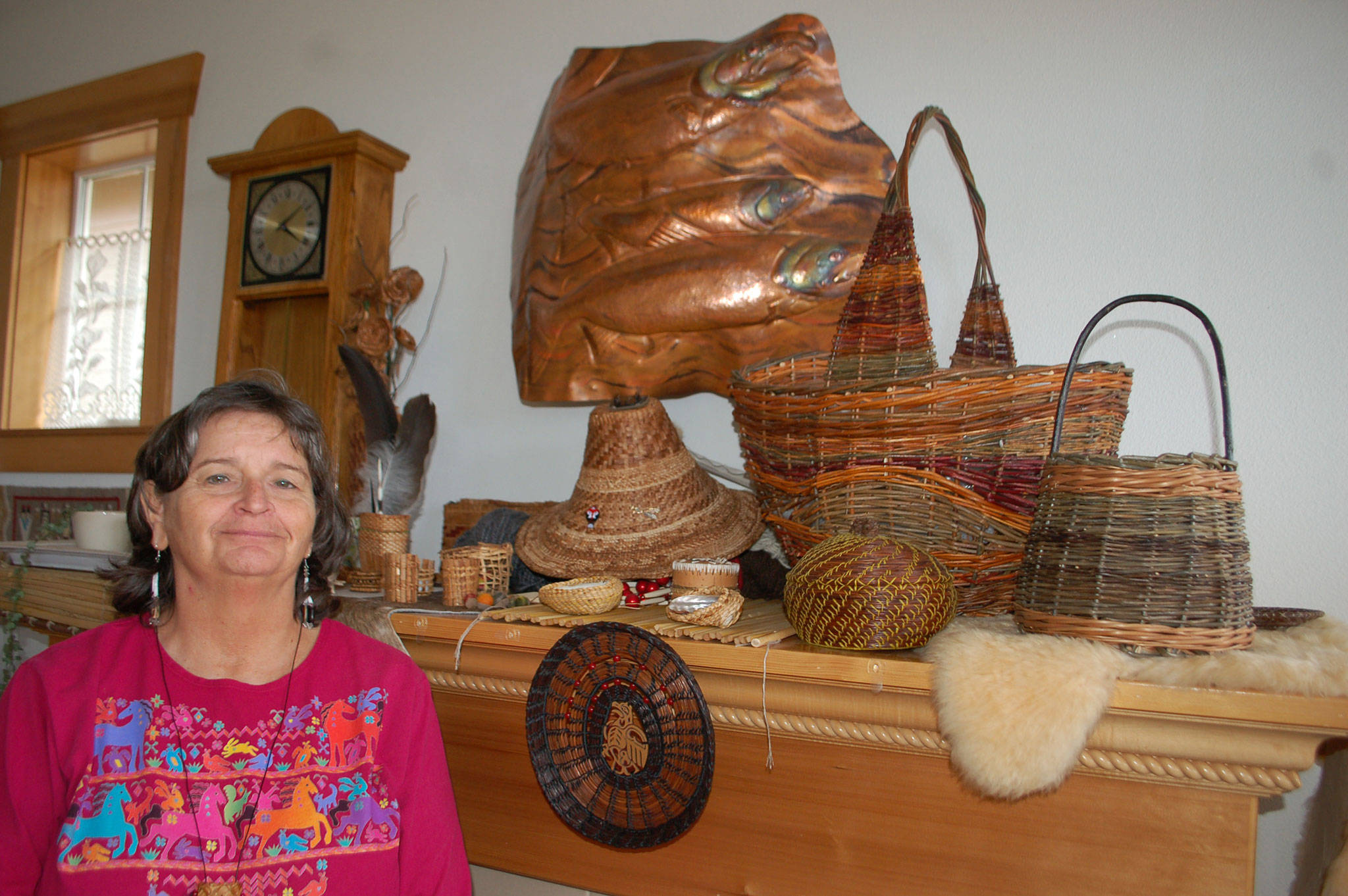Weaving came natural to Cathy MacGregor eight years ago, and she’s continued to weave every day ever since.
“It spoke to me,” MacGregor says.
MacGregor, a Sequim resident and tribal elder of the Jamestown S’Klallam Tribe, applied money provided for tribal elders to take weaving classes with Sequim Master Weaver Kathy Ervin.
MacGregor weaves a variety of art and practical items using her skills, including jewelry, hats, baskets, crowns for the Port Gamble S’Klallam Tribe royalty and more.
In 2015, one of her weaved baskets made its television debut in a Haagan Dazs’ Artisan Collection ice cream commercial.
MacGregor continues to improve her weaving skills, and received a grant from the Native Creative Development Program at Evergreen State College that allowed her to teach participants of the 2013 Tribal Canoe Journey how to make cedar hats. She has been a participant of the Canoe Journey for several years.
Since she taught hat weaving in 2013, MacGregor said she has seen more cedar hats present at the Canoe Journey.
“You learn more when you become a teacher,” MacGregor says. “Two-thirds of the people were wearing cedar hats that I had some influence on, and that made an impact on me.”
MacGregor attends the Northwest Native American Basketweavers Association’s annual convention each year. There she met Lisa Telford, an experienced and renowned Haida weaver from Everett.
MacGregor says she would see Telford one to two times a year for a basket weaving class.
“She (Telford) made me learn,” MacGregor says. “She has incredible materials for students to weave with.”
MacGregor later asked Telford if she could be her apprentice, and after Telford received a mentor artists fellowship grant for one year from the Native Arts & Cultures Foundation, that allowed for MacGregor’s apprenticeship at the beginning of the year.
As an apprentice,
MacGregor has learned how to harvest cedar, weave different kinds of bases and do twine work, and eventually will learn how to weave a canoe cape for next year’s Canoe Journey.
MacGregor says Telford is teaching her a Haida weaving style, one that sees weaving working down. Coast Salish weaving style, by comparison, starts at a base and works up.
“It’s been amazing; it’s been a whole new learning experience,” MacGregor says.
MacGregor says Telford taught her how to harvest her own local cedar, with a permit from the National Forest Service. MacGregor uses red and yellow cedar for her most recent weaving projects but also has used pine needles, willow and sweet grass as materials in the past.
“It’s very rewarding for me,” MacGregor says. “I love learning.”
MacGregor’s work has exhibited at the Jefferson Museum of Art & History, the Jamestown S’Klallam Tribal Library, the Northwinds Arts Center in Port Townsend, The Evergreen State College Native exhibit in the college’s Longhouse, the Washington State History Museum, the Jefferson County Library and the Indian Craft Shop in the Department of Interior in Washington, D.C.


